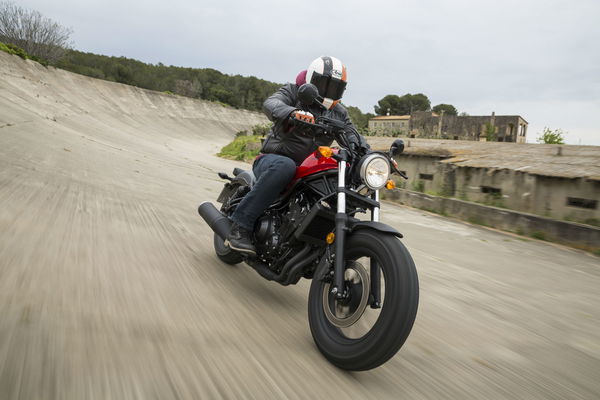First ride: Honda CB1100 RS & EX review
The RS takes the same basic frame and motor as the classic EX and hits it with a sports hammer
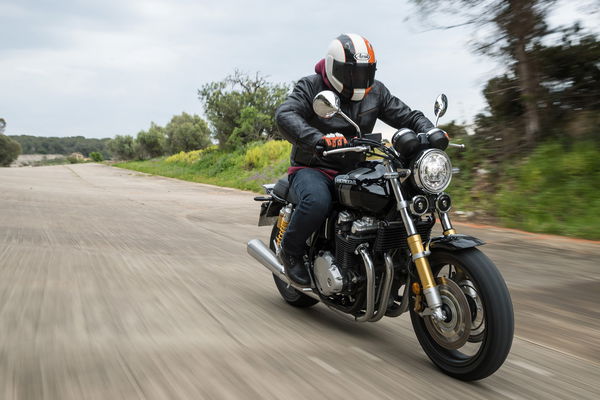
WHY did the chicken cross the race track?
To get On-da other side.
It’s funny – or not – what goes through your mind when you’re up in the air, yet with both wheels in contact with the ground. That might be because it’s not every day you’re riding round a banked oval speed circuit in Spain, now converted into a chicken farm, on a brand new Honda.
This is the launch of the CB1100 RS and CB1100 EX, and we’re at the Autodromo de Sitges Terramar just outside Barcelona. The track was built way back in 1922, raced on only a few times, then fully abandoned in the 1950s – since when it’s been a chicken farm, for cluck’s sake. But the dramatic concrete banking is still intact; crumbling, cratered and mossy, but navigable by motorcycle. With banking at each end that goes all the way up to vertical, it’s like a cross between a racetrack and a wall of death. So it’s not about top speed and lap times round here, it’s about atmosphere.
Which also sums up Honda’s two new CB1100s.
For a company that kickstarted the modern superbike with the 1969 CB750, it’s taken Honda a long time to revisit their history. When other Japanese factories were repackaging old air-cooled engine technology with a retro twist in the 1990s, Honda built the resolutely liquid-cooled CB1000 and CB1300. It was only a few years ago, in 2013, that they succumbed to fashion and released the air-cooled CB1100 – perfectly timed to face extinction from Euro 4 emissions legislation.
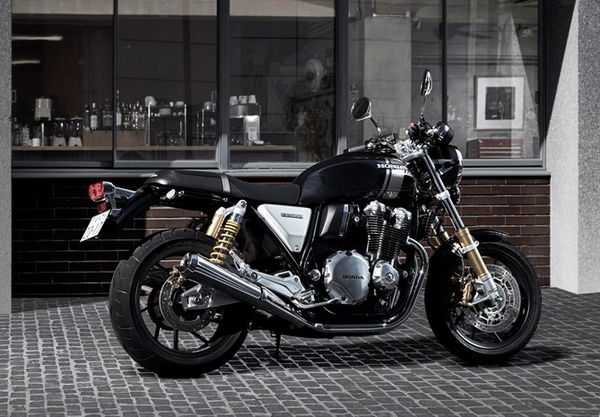
Before diving into the whys and wherefores of the RS (above) and EX (below), it’s worth detouring to talk air-cooling; seeing as Yamaha have just dropped the air-cooled XJR1300 Racer from their line-up, isn’t the writing on the wall for big-bore air-cooling?
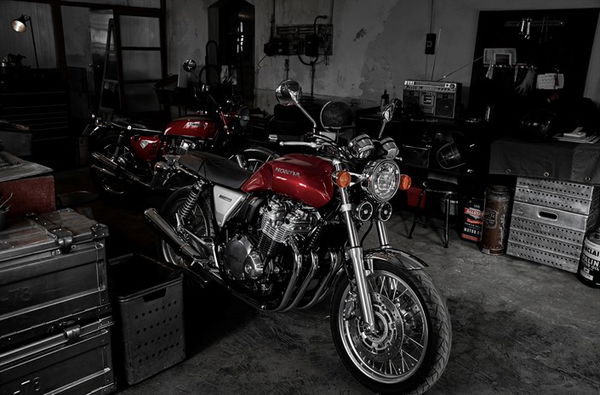
Not with the CBs; Euro 4 regs were factored into the engine design brief from the start. And it depends how much power you want your motor to make. With the bottom end and stroke of the CB11’s motor lifted from the liquid-cooled CB1300 (itself based on the CBR1000F motor from 1987), and with deeply finned, air-cooled barrels slimmed to bring capacity back to 1140cc, the 1100RS and EX sneak under the Euro 4 wire by careful design of air and oil cooling paths (say, the hot spots around the spark plugs and exhaust valves), and by not being hugely powerful in the first place.
It works like this: in the old, air-cooled days you’d rely on the flow of air, oil and fuel, plus cam and ignition timing, to control combustion and engine temperatures – and when there were few limits on pollutants in the exhaust gas, you could balance them and tune them any way you liked.

But to meet Euro 4, the catalyst in the exhaust has to work cleanly and efficiently under all conditions, from cold start on a cold day to full throttle on a hot day, within a narrow temperature window. So controlling engine temperature becomes critical – and when you’re forced to be parsimonious with fuel (to keep emissions down), but you want to keep air-cooling because it looks cool (ironically), the only way to keep exhaust gas clean enough is to tune – or de-tune – cam and ignition timing…
… Which means your engine inevitably makes less power at lower revs. Or, in the CB1100s’ case, 88bhp at 7500rpm and 69 lb.ft at 5500rpm (and that’s why 1987’s liquid-cooled 998cc CBR1000F version of the CB1100’s motor made a measured 120bhp at 9800rpm... 30 years ago).
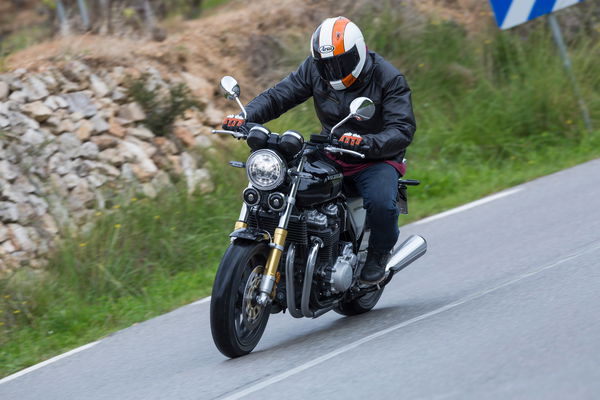
Anyway, so here we are with the 2017, air-(and oil-)cooled, Euro 4-friendly CB1100RS and EX. Both are updated spin-offs of the 2013 CB1100 – which was a bit vanilla, unsure if it was a full retro or something more modern. Thus Honda pitch the new bikes two ways, to satisfy both camps. The EX is a retro-ised, wire-spoked, twin silencer version; the RS is a sportified, semi-café racer.
Both bikes have the same updates over the outgoing CB1100s: bigger, 17 litre tanks, new suspension, new wheels, a new, lighter slipper clutch, redesigned rear mudguard and LED tail light, LED headlight, shorter, lighter silencers, a redesigned single intake manifold, and a longer sidestand.

And both bikes also have updates specific to themselves. The EX’s 18in wheels get fewer, longer wire spokes with better plating mated to smaller ally hubs and new Dual Bending Valve Showa forks. The EX is five kilos lighter than the previous EX, at 255kg.
Meanwhile the RS has more significant changes; it’s a new bike. It takes the same basic frame and motor as the classic EX and hits it with a sports hammer: cast 17in ally wheels, radial Tokicos on 310mm discs (instead of the EX’s 296mm), fat 43mm Showa Dual Bending Valve forks with extra damping, twin Showa piggy-back shocks, a fat aluminium swingarm, flatter handlebars and a blacked-out look to engine and chassis. Steering geometry is sharper; more fork offset gives less trail, steering angle is a degree steeper and wheelbase 5mm shorter. Weight is 252kg.
I ride the EX first, and the riding impression is instantly and reliably Honda – seat height is low, the bike’s weight is focused between your knees and low speed steering is perfect. Fuelling is spot-on, the new clutch is finger-light, and the EX barges through traffic with a big, boomy, low-revving, bottom-end rich thump. The bars are high and wide, giving a laid-back stance with tons of leverage – filtering between cars is like carving a Sunday roast.
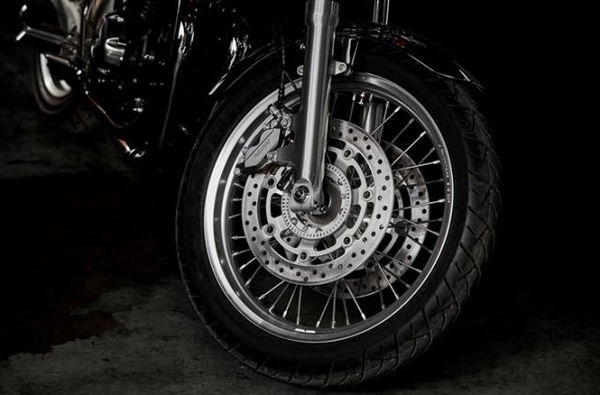
As speeds increase, the effect of the 18in wheels and slightly bouncy forks give the EX a properly classic ride – it reminds me of a well-maintained Z1. You can tell the tyre’s mass is spinning at a greater distance from the axle than usual because steering has a faintly gyroscopic feel – turning a large, heavier spinning thing meets more resistance than a smaller, lighter one. And the EX’s 41mm Showas, flaunting their two-way damping valves with ‘Dual Bending’ stamped on the fork tops, pogo gently under hard braking. It’s a safe, secure and enjoyable way to ride – but, to be brutally honest, the CB1100EX hasn’t evolved a great deal further than 1992’s Kawasaki Zephyr 1100; it weighs less, handles better, has ABS, drinks less fuel and pollutes the planet less. But then, that’s all you can reasonably expect of a retro before it stops being a retro. The EX is a quintessential ‘classic’ Honda.
The CB1100RS, on the other hand, is a different beast altogether. It has fatter, stiffer forks and shocks, bigger brakes, smaller wheels, stickier, wider rubber, 3% more acceleration thrust from the lowered gearing effect of the smaller rear tyre, sharper steering geometry and a lower, more front-biased riding position.
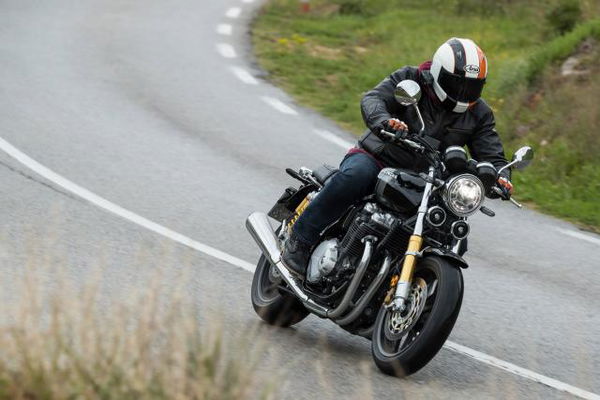
And it feels all of it – you’re instantly engaged with the chassis. It has more aggressive steering with far more feedback from the front wheel and the brakes; you can feel the discs gripping in the calipers as if biting on them between your teeth. The RS dives into corners more hastily, chasing the apex, and lays down its traction more effectively on the other side. You can hustle the sporty CB11 with surprising pace – and when you’ve had enough of all that, park it up and admire it; because it looks the absolute tits.
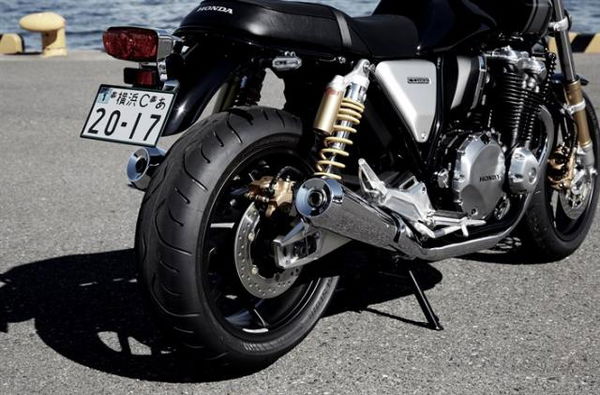
Meanwhile, the 88bhp motor in both CBs has an enhanced, offbeat gruff feel and a grumbling exhaust note. It comes from alternate cam timing; cylinders one and two have different timing to three and four (they fire in 1-3-4-2 order) – for no reason than to lend charisma to an otherwise smooth and featureless in-line four power delivery. It certainly works – it’s a bit like the engine’s got a misfire (or as if its carbs need balancing... if it had carbs). The original CB11 in 2013 featured the idea, but the effect is amplified in the EX and RS with tuning to the single intake manifold and exhaust silencers.
The new bikes also keep the CB11’s 6-speed transmission, introduced in 2014. It’s an odd set of ratios; sixth is called an overdrive and, sure enough, at 70mph in top the revs are barely off tickover. However, there’s not a lot of roll-on acceleration in fifth either – to get past traffic at speed, you need to cog it down to avoid being stranded (as I found out); there’s less on tap than you might expect. If I had a CB1100RS, I’d gear it down. Both motors also run a bit toasty in town – welcome when it’s chilly and you want to warm your hands, less so when it’s warm and your knees are cooking.
So if the EX is a lazy, easy-going classic ride; the RS makes it a race. Whether it has the chops to make it against smaller, lighter, faster café racers like Triumph’s Thruxton and BMW’s R nineT Racer is another matter. I suspect not – but then I also suspect no-one outside the motorcycle press cares about all that stuff anyway.
Model tested: Honda CB1100 RS and CB1100 EX [EX specs in brackets]
Price: £11,139 [£10,765]
Engine: 1140cc 16v inline four-cylinder
Power: 88hp at 7,500rpm
Torque: 69lbft at 5,500rpm
Frame: Steel tube double cradle
Suspension: Front - 43mm Showa telescopic forks, adjustable preload / Rear - Twin Showa rear shocks, adjustable preload
Brakes: Front - Two four-piston radial calipers and 310mm discs, ABS, [Two four-piston calipers and 296mm discs, ABS] / Rear - Single-piston caliper and 256mm disc, ABS
Tyres: Front - 120/70 17, [110/80 18] / Rear - 180/55 17, [140/70 18]
Seat height: 795mm [790mm]
Fuel capacity: 16.8 litres
Wet weight with full tank: 252kg [255kg]
Colours: Red, Black [Red, Yellow, White)
Available: Now
